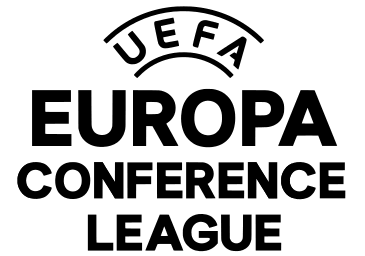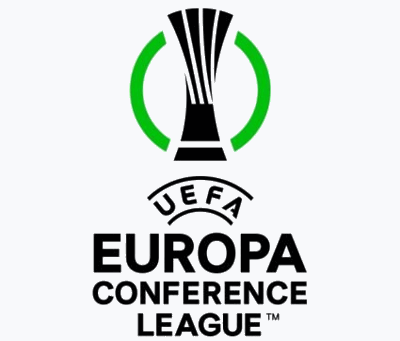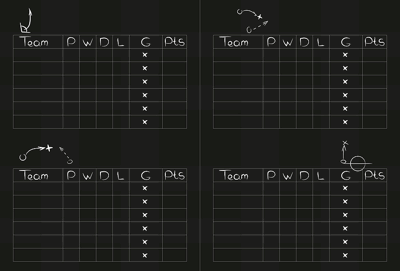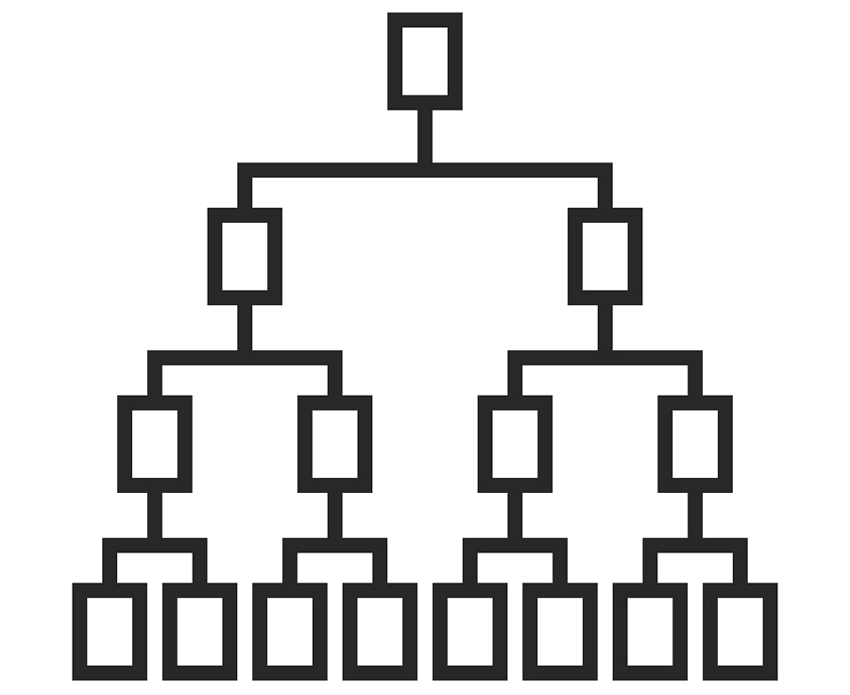Europa Conference League Stadiums & Stats

UEFA never tires of trying to re-invent itself, constantly coming up with new tournaments or new formats for the old ones. So it is that the Europa Conference League came into existence ahead of the 2021-2022 season, offering clubs another route to playing European football. As the name suggests, it is the lesser cousin of both the Champions League and the Europa League, making it the third tier competition.
The idea behind its origin was to give more clubs a taste of European football, especially those sides from countries that traditionally struggle to make it in to the Champions League and the Europa League. One might well wonder why English sides were therefore able to qualify for it, especially considering the first side that did so was Tottenham Hotspur, who narrowly beat out Arsenal for the place.
The inaugural edition was won by Jose Mourinho’s Roma beating Feyenoord 1-0 at the Arena Kombëtare, Tirana, Romania. The second final will be held at Slavia Prague’s Sinobo Stadium in 2023. Despite being a brand new competition the format will be changed for the 2024-25 season in line with the Champions League and Europa League, this will involve replacing group stages with a new league phase
Europa Conference League Stadiums
| Stadium | Year Opened | Capacity | Ave Attendance | Record Attendance | Record Attendance Match |
|---|---|---|---|---|---|
|
AFAS Stadion
AZ Alkmaar |
2006 | 19500 | 15074 | 17023 | AZ Alkmaar v Arsenal 2006 |
|
Deutsche Bank Park
Eintracht Frankfurt e.V. |
1925 | 51500 | 26338 | 81000 | Eintracht Frankfurt v FK Pirmasens (1959) |
|
Ghelamco Arena
KAA Gent |
2013 | 20000 | 19785 | 20000 | Gent v KV Mechelen (2013) |
|
Jan Breydel Stadium
Club Brugge KV |
1975 | 29062 | 26129 | 28728 | |
|
Ludogorets Arena
PFC Ludogorets |
2011 | 10254 | 1507 | 8763 | Ludogrets v Levski Sofia |
|
Luminus Arena
K.R.C. Genk |
1999 | 23718 | 20000 | 24956 | |
|
Pittodrie Stadium
Aberdeen |
1899 | 20866 | 15633 | 45061 | Aberdeen v Hearts (1954) |
|
Polish Army Stadium
Legia Warsaw |
1930 | 31800 | 21233 | 30787 | Legia Warsaw v Śląsk Wrocław (2013) |
|
Stade Pierre-Mauroy
Lille OSC Métropole |
2012 | 50186 | 29487 | 48960 | Lille v PSG (2014) |
|
Stadio Artemio Franchi
ACF Fiorentina |
1931 | 43147 | 26031 | 58271 | Fiorentina v Internazionale (1984) |
|
Stadion Maksimir
Dinamo Zagreb / Croatia |
1912 | 35123 | 3875 | 64138 | NK Zagreb v NK Osijek (1973) |
|
Şükrü Saracoğlu Stadium
Fenerbahçe |
1908 | 50530 | 28589 | 45070 | Fenerbahçe v Galatasaray (2015) |
|
Villa Park
Aston Villa FC |
1897 | 42657 | 41679 | 76588 | Aston Villa v Derby County (1946) |
|
Vodafone Arena
Beşiktaş J.K. |
2016 | 42590 | 23312 | 38421 | Beşiktaş-Osmanlıspor (2016) |
Final
| Fixture | Date & Time | Stadium | ||
|---|---|---|---|---|
 ? ? | v |  ? ? | Wed 29th May | Agia Sophia Stadium |
Tournament Format
Overall Structure
| Round | New Teams Entering | Teams from Previous Round | Teams Total | No Fixtures |
|---|---|---|---|---|
| First Qualifying Round | 72 | – | 72 | 36 |
| Second Qualifying Round (C) | 20 | – | 20 | 10 |
| Second Qualifying Round (NC) | 54 | 36 | 90 | 45 |
| Third Qualifying Round (C) | – | 10 | 10 | 5 |
| Third Qualifying Round (NC) | 7 | 45 | 52 | 26 |
| Play-Off (C) | 5 | 5 | 10 | 5 |
| Play-Off (NC) | 8 | 26 | 34 | 17 |
| Group Stage | 10 | 22 | 32 | 96 |
| Last 16 (Preliminary) | 8 (3rd Place EL Group) | 8 (Group Runners-Up) | 16 | 8 |
| Last 16 | – | 16 | 16 | 8 |
| Quarter Finals | – | 8 | 8 | 4 |
| Semi Finals | – | 4 | 4 | 2 |
| Final | – | 2 | 2 | 1 |
KEY: C = Champions Path, NC = Non-Champions Path, EL – Europa League
Qualification

In order to qualify for the Europa Conference League, clubs need to either do well in their domestic league or else one of the domestic cups. As is often the case, UEFA have worked hard to making qualification as convoluted as possible, offering ‘two paths’ for qualification: the Champions Path and the League Path. The Champions Path is a slightly misleading title, given it’s for teams that lose their Champions League group stage qualification match who drop down into it.
The number of teams from each league is decided upon according to the UEFA country coefficients. Countries that are a ranked between 1 and 5 will have one team, those between 6 and 15 will have two teams and those ranked 16 to 50 will get three teams. Randomly, those ranked from 51 to 55 will drop down to having two teams. Liechtenstein don’t have a domestic league, so the winner of the Liechtenstein Football Cup gains qualification, regardless of their coefficient ranking.
One of the key things about the introduction of the Europa Conference League is that other leagues were reorganised in order to ensure that no country would get more berths than they had before its invention. Instead, the Conference League simply took the place of the lower qualification berths of the Europa League, but instead entered this secondary tournament rather than the Europa League itself.
Ahead of the debut season, the competition saw 72 teams make it to the first qualifying round, 110 in the second qualifying round and 62 in the third qualifying round (see earlier table). There were then 44 teams that made the play-off round, which was split into one section for Champions and another for Non-champions. The Group Stage was then made up of 5 winners from the Champions play-offs, 17 from the Non-champions play-offs and ten sides eliminated from the Europa League play-off round.
Group Stages
 The format of the Europa Conference League will see 32 teams making it into the group stage of the competition. As a result, they will be split up into eight groups, each of which will contain four teams.
The format of the Europa Conference League will see 32 teams making it into the group stage of the competition. As a result, they will be split up into eight groups, each of which will contain four teams.
Those teams will face each other once at home and once away, just as in the group stage of both the Champions League and the Europa League, with the teams then organised according to the points earned.
Three points will be given for a win, one point awarded for a draw and no points given to the losing team in a match when there is a winner.
Each group is then placed in an order at the end of the group stage, initially according to points one and, if they can’t be separated, the likes of goal difference, goals scored and head-to-head results, just as with the other two major European competitions.
Knockout Rounds
 You might think that once the competition had progressed to the knockout rounds things would be relatively simple, but that is not the case. The Europa Conference League introduces a Preliminary Knockout Round, which sees the eight runners-up from each group joined by the eight third-placed teams from the Europa League group stage, meaning that eight of those teams move into the knockout round proper.
You might think that once the competition had progressed to the knockout rounds things would be relatively simple, but that is not the case. The Europa Conference League introduces a Preliminary Knockout Round, which sees the eight runners-up from each group joined by the eight third-placed teams from the Europa League group stage, meaning that eight of those teams move into the knockout round proper.
The first knockout round proper is the round of 16, which is made up of the eight group winners and the eight winners of the Preliminary Knockout Round, who face each other across two legs. One leg is played at each of the team’s home stadium, or a stadium representing their home if the ground in question is not up to EUFA’s exacting standards. After the round of 16 comes the quarter-finals and then the semi-finals.
After all of that, the two best teams in the competition will advance to the final. The competition will see 141 matches played across 15 match weeks, with 181 teams in total taking part. The winner will gain a place in the Europa League for the following season, unless they should happen to qualify for the Champions League via their own domestic league performance.
Format Change 2024-25 Season
In line with changes for the CL and EL the ECL format will be adjusted for the 2024 season dispensing with the group stages in favour of a new league phase. This will now involve 36 teams playing 6 matches in the league, three home and three away all against different opponents. The top 8 teams after the league phase advance straight to the knockout rounds and the teams placed 9th to 16th contest a two-legged play-off round to make up the remaining 8 places.
The competition also becomes exclusive with no teams dropping in from the Europa League after the league phase.
Previous Winners
| Host City | Year | Winner | Stadium |
|---|---|---|---|
 Athens Athens |
2024 | ? | Agia Sophia Stadium |
 Prague Prague |
2023 | West Ham | Sinobo Stadium |
 Tirana Tirana |
2022 | Roma | Arena Kombëtare |
British Club Performance
| Club | Cups | Runners Up | Played | Wins |
|---|---|---|---|---|
| West Ham | 1 | 0 | 15 | 14 |
| Tottenham | 0 | 0 | 8 | 3 |
| Leicester City | 0 | 0 | 8 | 4 |
Europa Conference League Stats
| Tournament Stats | |
|---|---|
| First Year | 2021-22 |
| Titles (Nation) | Italy (1) & England (1) |
| Titles (City) | Rome (1) & London (1) |
| Highest Overall Attendance | 2,077,952 (2022-23) in 141 matches |
| Prize Money Winner | €5.0 million (2023) |
| Group Stage Base Fee | €650,000 (2023) |
| Qualifying Teams | 184 |
| Final Teams | 40 (32 Group + 8 From EL) |
| Club Stats | |
|---|---|
| Titles | Roma & West Ham - 1 |
| Runner Up | Feyenoord & Fiorentina - 1 |
| Consecutive Appearances | Multiple - 2 |
| Undefeated champions | West Ham (2023) |
| Consecutive Wins | No Team More Than 1 |
| Biggest Win One Game | 6-1 (Bodø/Glimt v Roma - 2021) |
| Biggest Aggregate Win | 8-3 (Feyenoord v Slavia Prague - 2022) |
| Most Goals In A Game | 8 (4-4 PSV v Copenhagen - 2022) |
| Player Stats | |
|---|---|
| Highest Scorer | Arthur Cabral - 12 (Basel & Fiorentina) |
| Most Goals In A Season | Cyriel Dessers - 10 (Feyenoord) |
| Most Goals In A Game | Harry Kane, Gaëtan Laborde, Nicolò Zaniolo, Morales, Gift Orban - 3 |
| Fastest Goal | Ferdy Druijf - 32 seconds (Rapid Wien) |
| Oldest Player | Pepe Reina - 40y 197d (Villareal) |
| Oldest Scorer | Milan Petržela - 39y 89d (Slovácko) |
| Youngest Player | Roony Bardghji - 16y 115d (PSV) |
| Youngest Scorer | Marko Milovanović - 18y 127d (Patizan) |
About the Europa Conference League
In The Beginnings
Reports suggest that UEFA had toyed with adding a third-tier European competition to their roster since 2015. The logic behind such a move was that it would give clubs that ply their trade in countries with a lower coefficient ranking a chance to play European football. Given that they typically tend to be eliminated from the Champions League and the Europa League at the early stages, it would also provide an opportunity to progress to a competition’s latter stages.
In the middle of 2018, talk about launching such a competition intensified. Some sources claimed that an agreement had already been reached for the launching of such a tournament, with the Europa League split into two in order to accommodate it. On the 2nd of December 2018, UEFA confirmed the competition’s existence, giving it the provisional name of the Europa League 2. The idea was that it would be launched as part of a three-year competition cycle.
The 24th of September 2019 saw the competition given its official title of the UEFA Europa Conference League, with the organisation saying that it would bring ‘more matches for more clubs and more associations’. The competition’s trophy and branding was officially announced on the 24th of May 2021.
Roma won the first ever ECL beating Feyenoord by a single goal in the final held at the Arena Kombëtare in Tirana (Romania). Of course it had to be Jose Mourinho who won it maintaining the amazing stat of winning all 5 European finals he has been involved in and bringing home the first European trophy for Roma.
West Ham became the first British club to win the trophy in 2023 beating Fiorentina 2-1 in the final in Prague. It was the first European trophy for the London club since their Intertoto cup win in 1999.
The Trophy
Those with only a passing intertest in football would be forgiven for confusing the Europa Conference League trophy and the Europa League trophy, given that they bear a slight resemblance to one another. Standing at 57.5cm tall and weighing 11kg, the trophy is made up of 32 hexagonal spines, which are supposed to represent each of the teams that make it the competition’s group stage.
Presumably the designed shrugged to incorporate the other eight teams that join the competition before the knockout stage proper gets underway. UEFA’s nonsense corporate speak suggests that the curved nature of the spines were ‘inspired by the fight of a football heading towards a goal. The base and the top, meanwhile, are made of hand-brushed brass compared to the silver finish of the spines.
